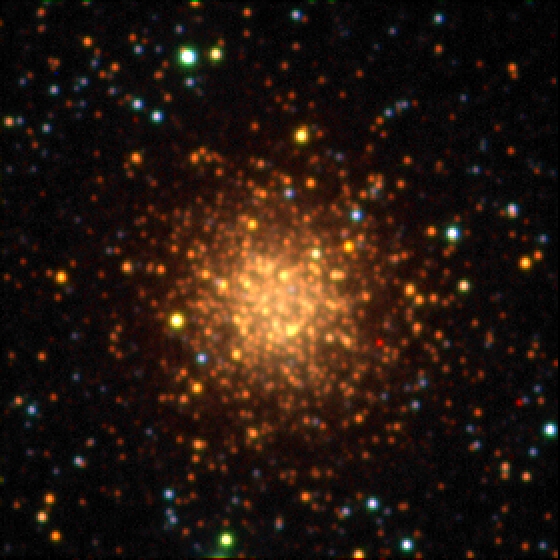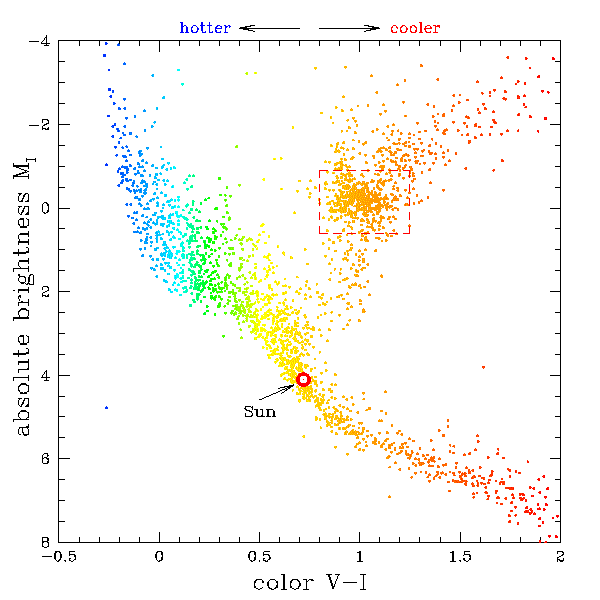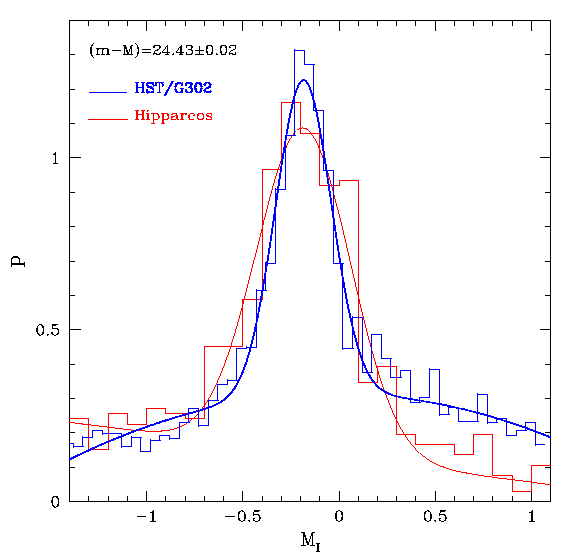
PHOTO CREDIT: Andrzej Udalski, Peter Garnavich and Krzysztof Stanek.
See our press release for the 195th Meeting of theAmerican Astronomical Society (Poster #11.04).
Stellar cluster NGC 416 located in the nearby Small Magellanic Cloud galaxy. The cluster contains many red clump stars, allowing for accurate distance measurement to the host galaxy.This photograph was made with the 1.3-meter (51-inch) Warsaw University Telescope at Las Campanas Observatory, near La Sarena, Chile.

The accurate measurement of distances is one of the most basic goals
of astronomers and one of the most difficult. The intrinsic brightness
of pseudo-standard candles such as Type Ia
supernovae is not known a priori, but must be calibrated from
lower rungs on the distance ladder such as Cepheid variables which in
turn must be calibrated by other means. Trigonometric parallax is the
most direct method for estimating astronomical distances, but parallax
is effective out to a very limited distance from the Sun. Even with
the success of the Hipparcos satellite only
a handful of Cepheids were calibrated with good enough precision and
the base of the distance ladder remains unsteady.


Paczynski & Stanek (1998) used the red clump stars observed by OGLE to obtain an estimate of the distance to the Galactic center. Stanek and Garnavich (1998) used the red clump stars observed by the HST in M31 to measure the distance to M31 in a single step (see the figure above). Udalski et al. (1998) have used the data collected by the OGLE collaboration to obtain distances to Large and Small Magellanic Clouds. Red clump giants can provide a very precise estimate of the distances to metal-rich Galactic globular clusters and nearby galaxies.
There have been many important papers discussing the red clump as a distance indicator. You can access them from the astro-ph preprint archive. You can also access here our AAS Meeting #193 poster (in PostScript or GIF format), which discusses red clump as distance indicator.
Bohdan Paczynski's page, which includes additional information about the red clump

- Distance determination to nearby galaxies

- Optical Gravitational Lensing Experiment
SINS - The Supernova INtensive Study
HST Key Project on the Extragalactic Distance Scale
Hipparcos Space Astrometry Mission
CASTLe - CfA-Arizona Space Telescope Lens Survey
 January 21st, 2000.
January 21st, 2000.